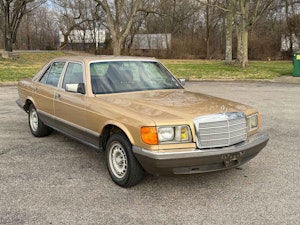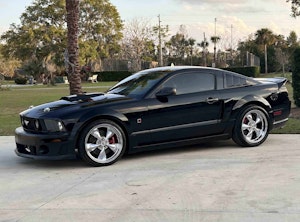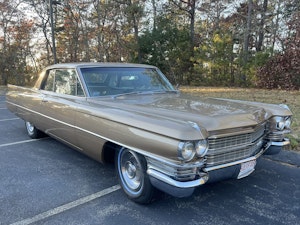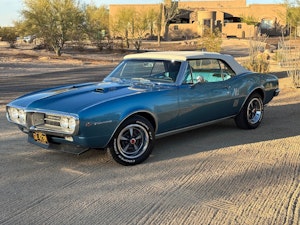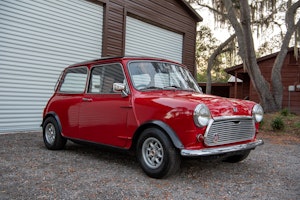Media | Articles
Avoidable Contact #100: Me and my CB, or The Day a Junkie Attacked a UJM

Never build a vehicle for the enthusiasts. They’re never satisfied. Such was the case when Honda introduced the CB1100 in 2010, because the company had gone full retro. You never go full retro! Well, maybe that’s not the correct way to phrase it. Honda went wrong retro.
The buyers wanted a perfect reincarnation of the original 1969 single-cam CB750 superbike, complete with rounded tank, wire wheels, and vintage details. What Honda gave them was a tribute to the late-’70s twin-cam CB750, which had a squared-off tank, mag wheels, and a slightly more aggressive riding position. Worse yet, the buyers wanted the 1140-cc engine to be a barn-burning monster that humbled the competition the way the original CB750 did, but instead Honda used the 45 percent increase in engine capacity to produce an utterly magical, smooth-running, essentially immortal air-cooled engine that met all current and upcoming global emissions requirements—but only made 90 or so horses at the rear wheel.
Oh, and Honda put a speed limiter on it. For all markets. So the quarter-mile time of a CB1100 isn’t limited by the power of the thing but rather by the fact that you run the last hundred feet at 112 mph. Still turns a low 12, which will see off most cars short of a McLaren or a GT500 Shelby but is, in fact, no faster than a healthy 1969 CB750. Last but not least, it made it sewing-machine quiet so it wouldn’t be unwelcome in upscale Japanese neighborhoods.
Needless to say, the buyers stayed away in droves. In 2014, Honda made matters even worse by introducing the CB1100 Standard, which looked like a poverty-spec version of the 2013 five-speed model but was just a blacked-out version of the six-speed 2013 Deluxe. Nobody wanted this ugly-ass thing, and it sat in showrooms for years. In the case of my 2014 CB1100 Standard, it sat on the showroom floor of Indiana’s Newburgh Powersports until June 2015, when I showed up and bought it. Most motorcycle dealerships are about at the ethical level of car dealerships from 1958, but “NP” was different. It sold me the bike for $6495 against the original sticker of $10,495 and let me put it on my Amex. I showed up expecting dealer fees and all sorts of rigmarole, but instead Newburgh just had it washed, fueled, and ready for me to ride the 351 miles back home.
Eighty-seven miles into this ride, the fuel light came on and I discovered the one major difference between the 2014 Standard and the 2013 Deluxe: that squared-off ’70s fuel tank only held three and a half gallons. So it’s a hundred-mile bike. Which is really about as far as you want to sit in a completely upright position at 90 mph or so before taking a brief rest. The only problem occurs when you go out West, where there isn’t a gas station every 10 miles.
Marketplace
Buy and sell classics with confidence
Not to worry. Of the 11,612 miles I’ve put on the big Honda over the past six years, virtually all were spent on commutes of 20 miles or less, across weather conditions ranging from 20 degrees Fahrenheit to boiling summer sun. Time and again I let my sportbikes —a VFR800 Anniversary and a rip-snorting ZX-14—sit in the garage while I rode this unassuming Universal Japanese Motorcycle to work, on errands, and to meet friends for lunch or dinner.
The CB1100 has several advantages over the fast bikes. Nobody would ever bother to steal it, because it looks utterly valueless. I never met anyone who didn’t think it was already 20 years old. It didn’t run hot in traffic, unlike the ZX-14R. It didn’t complain in the cold the way the super-trick V-Four in the VFR800 did. You could sit in traffic and clutch it forward three feet at a time for half an hour. Not a problem. It was strong enough to move for any gap in traffic. I would like to have ABS on it, as some CB1100 models do; this is a bike I ride in the rain a lot, and I’ve locked the front wheel far too often at speed, but that’s a failure of skill on my part.
I’m still on the original chain, the original brake pads, everything but the original tires, which I replaced with long-lasting Avon RoadRiders at around the 8000-mile mark. In the years before my wife bought her Yamaha R3, I would often put her on the back of the CB1100 so we could go riding down by old man Johnson’s farm. That’s a joke, referring to an old Prince song, and I’m already sorry I made it. Regardless, the Honda is very comfortable for a passenger.
Since day one I’ve had the impression that the triple crowns on the forks are slightly out of alignment. I’ve tried measuring it but can’t prove anything. Other CB1100 owners have reported the same impression, and the same lack of proof.
One day in 2016 I came out to the alley next to my office and found a note on the CB’s seat. SOMEONE KICKED OVER YOUR BIKE, CALL ME. The person who left the note owned another building facing the same alley. He showed me his security camera footage, that shows the following:
A scraggly-looking man is stumbling down the alley, clearly under the influence of something. He stops at the line of parked motorcycles and examines them: Gold Wing, a Harley V-Rod, a KLR650, a Moto Guzzi, and my CB1100. He shudders then kicks my CB as hard as he can, knocking it off the side stand and onto the ground. He then spits on the ground and stumbles on.
The damage was limited but disheartening: a bent turn signal, a large gouge out of the instrument cluster, a dent on the pipe, scuffs to the engine. The handlebars were bent as well, in a way that seemed to balance out my previous impression of a twisted triple crown. I replaced a few parts then left the rest; the CB now looked mean, like the Charleston Chiefs tour bus. A few years later, my recently-repaired left knee gave up on me at a stoplight and I dropped the bike on the other side. This troubled me a great deal less than it would have had the junkie not attacked it previously.
The CB1100 community, which is chock-full of very nice people, has come up with all sorts of modifications and “farkles” for these Hondas. I’m not a farkle type of person, so my bike has just two non-factory items on it. The first one was a concession to my age and declining vision: I installed the outstanding USA-made JW Speaker Adaptive 2 LED headlight, as seen on the Keanu Reeves bikes, using a kit from Motodemic. I love this headlight and cannot recommend it enough.
The second item was much cheaper: I bought a customized license plate frame from a company that would put anything you wanted on it. After some thought, I decided to put the the last two lines of Stephen Crane’s In The Desert on there:
In the desert
I saw a creature, naked, bestial,
Who, squatting upon the ground,
Held his heart in his hands,
And ate of it.
I said, “Is it good, friend?”
“It is bitter—bitter,” he answered;
“But I like it
“Because it is bitter,
“And because it is my heart.”
When the junkie kicked my bike over, the license plate frame scraped on the brick alley wall. So now it is basically illegible, which is fine. It never produced the desired result, that of having some gorgeous woman jump out of the car behind me, yelling, “OHMIGOD THAT’S STEPHEN CRANE … AND YOU’RE AMERICA’S GREATEST AUTOMOTIVE WRITER, JACK BARUTH!” If I want something like that, I’m going to have to pay for it.
In truth, the past six years have been less than kind to both me and the CB1100; I’ve broken both of my legs (in separate incidents, one MX, one BMX) and gone through various medical issues both tragic and farcical, while the bike is starting to look authentically ragged from the ravages of all-weather riding and outdoor parking. It occurs to me that I should do some cosmetic restoration while all the parts are still available. I’ve also started to consider if this would be a nice gift for my son in five years or so. He will want the ZX-14R, but I don’t even trust myself on that, much less trust him. The CB will be a better choice. It has a natural bias towards conservative behavior; you can rip through traffic on it, but you’ll feel a bit self-conscious doing so.
The hardest part about CB1100 ownership is coming to understand that Mitsuyoshi Kohama, the bike’s designer, had people like me in mind when he envisioned and styled it. One of my favorite writers once opined:
If some street hustler challenges you to a game of three-card monte, you don’t need to bother to play, just hand him the money, not because you’re going to lose but because you owe him for the insight: he selected you. Whatever he saw in you everyone sees in you—from the dumb blonde at the bar to your elderly father you’ve dismissed as out of touch. The only person who doesn’t see it is you, which is why you fell for it.
Today, at the precipice of 50, with enough metal in my body to make a KitchenAid blender and an increasing reluctance to get out of bed in the morning, I dislike the comfort I take in the CB1100’s upright stance, relaxed pace, effortless operation, precise controls, fussy wrong-era detailing. All of this suggests that I am not a ZX-14R rider who happens to own a CB1100, but rather a CB1100 rider who happens to own a ZX-14R. I owe Mitsuyoshi Kohama for the insight, for his awareness that there would be people whose idea of motorcycling was sedate enough to take joy in something like this. I owe American Honda for its unerring judgment in bringing it to me, albeit at 62 percent of retail. After 30 years of snickering at the old guys on their bikes, I’m preparing to join them.
Never build a vehicle for the enthusiasts. They come to it late. Anatole Lapine, who styled the Porsche 928, suggested that a truly great design takes a while to grow on you. In the decade since the CB1100 was introduced, plenty of other companies have introduced faster and more furious takes on the retro standard: Yamaha’s rip-snorting XSR900, the sensual Kawasaki KZ900, Indian’s FTR1200. They’re all frauds to some extent, watercooled modern efforts play-acting with a little makeup and plastic. The CB1100, by contrast, is all of a piece, conceived and executed just the way it was meant to be, waiting patiently in showrooms for the right person to understand it. That right person could be you. It is certainly me.


